- McLaren Artura hybrid tested on road and track
- New 3.0-litre V6 and e-motor for 671bhp total
- From £189,000, first deliveries scheduled July 2022
This car represents the next chapter for McLaren. The McLaren Artura is as close to a clean-sheet design as possible as McLaren Automotive gets into its second decade of car-making.
It’s the biggest change in approach since modern-era McLaren road car production began with the 12C in 2011. It also goes to show how purebred supercars can become one of the best hybrid cars on sale today.
Are you sure it’s all-new? It looks a lot like older McLarens…
McLaren has taken a deliberately familiar approach with the exterior design, echoing many of the cues of the old Sports Series cars (the 570S, 540C, 570 GT et al). So, although it’s designed from a clean sheet of paper, it’s one with a few pencilled-in guidelines from the Sports Series’ design language.
Despite appearances, the body is all new (with the minimum number of cleverly designed hot-formed aluminium panels. The rear clamshell, for example, is made from one single piece of aluminium). And despite appearances, this car isn’t a direct replacement for the Sports Series but instead occupies higher market ground, in terms of its price (at £30-40k more than a 570S), its technology and its performance, which is significantly more potent.

Perhaps it could have been more progressive in appearance, but it still causes a stir on the road in southern Spain. Several people go out of their way to tell us it’s ‘a beautiful car’ when we stop for photography, and its clean shape does without any active aerodynamic spoilers.
What’s new, exactly?
The Artura represents a new start: new platform including a new chassis (built in McLaren’s new Sheffield facility) and new ‘futureproof’ electrical architecture, new supply chain, new powertrain (including a brand-new V6 engine and transmission, incorporating the electric motor – and, for the first time in a McLaren, an e-diff), new rear suspension layout, new interior design and a new warranty scheme – five years, or up to 15 years as an option.
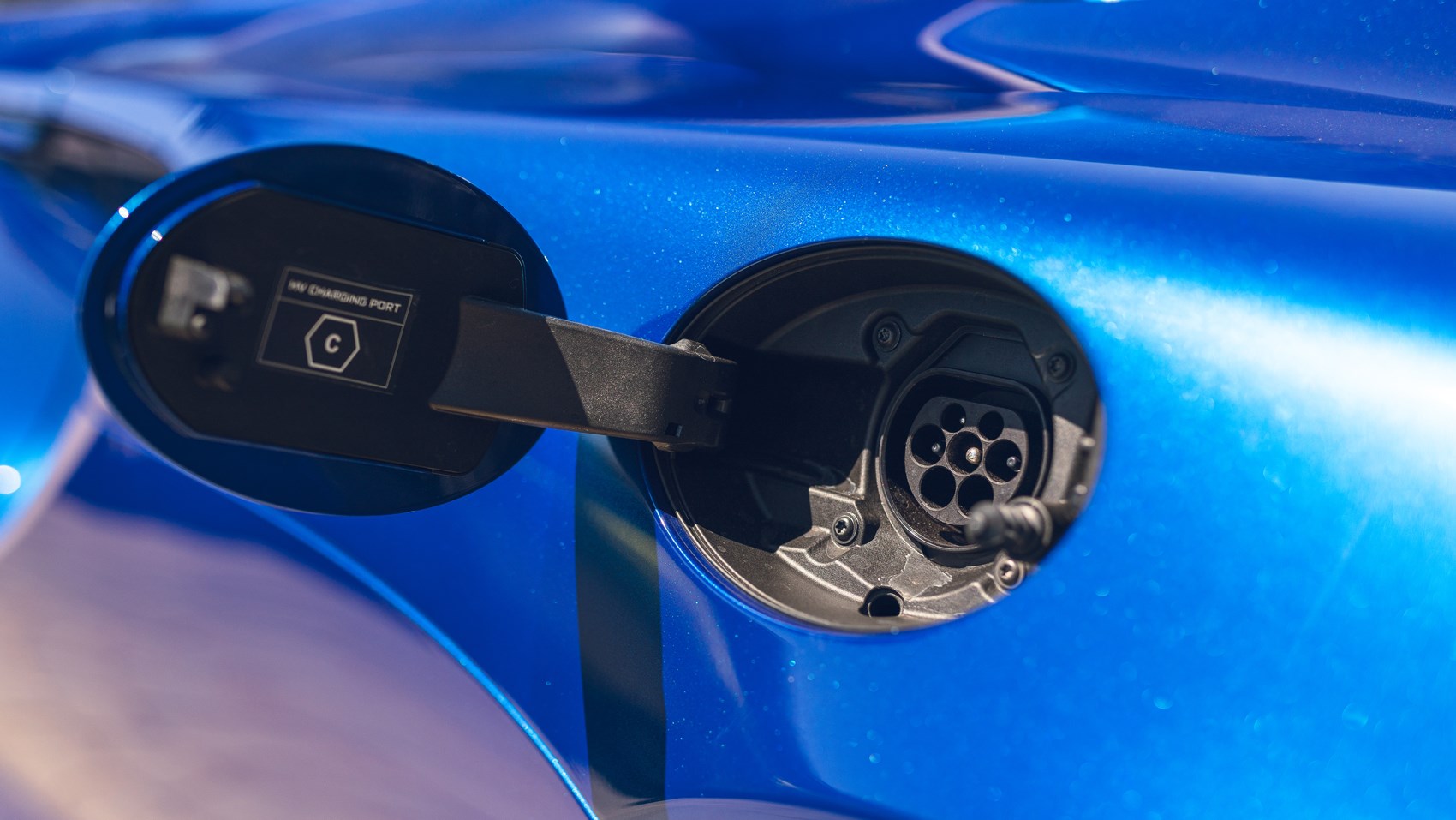
This isn’t McLaren’s first hybrid – there’s been the P1 and Speedtail hypercars – but it is its first core model to be a plug-in hybrid. And the first to be built on its new-generation MCLA (McLaren Lightweight Architecture) platform, which will form the basis for its next-generation of models, all of which will be electrified in some way.
Is it still built around a carbon tub?
It is, built at the company’s Sheffield centre. Replacing the older MonoCell and MonoCage family, it’s designed from the off to enable electrified powertrains.
Compared with McLaren’s older tub designs now incorporates the battery housing safety cell, part of the B-pillars and the basis of the windscreen surround (for better rollover protection) and lower, more helpfully shaped sills which make hopping in and out of the car far easier. Front and rear subframes are in aluminium.
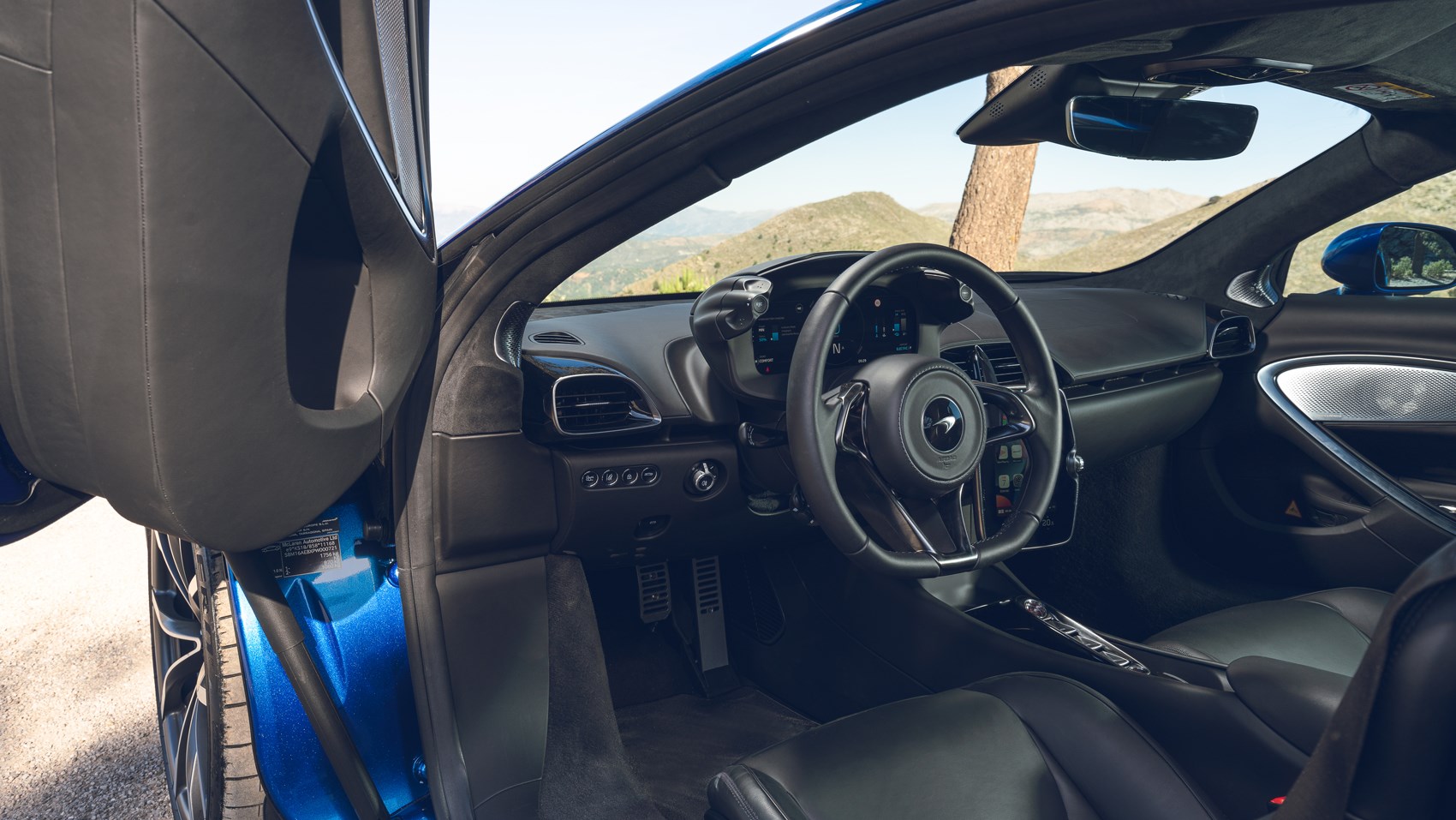
Is it lighter?
A direct apples-to-apples comparison is tricky because the designs of tubs old and new are so different but McLaren says that the new MCLA tub is stiffer, lighter, stronger. Theoretically, it’s around 12.4kg lighter than the previous structure, pound for pound. Well, kilo for kilo.
The new engine – why a V6?
Partly for its compact size. The new 3.0-litre engine is 50kg lighter and 190mm shorter than the V8 that powered previous McLarens, enabling a shorter wheelbase (30mm less than that of the 570S and 720S. The Artura’s overall length is similar to a 720S but it’s narrower).
Like the older V8, the V6 is designed by McLaren and built by Ricardo. Called the M630, if you’re into engine codes, it’s a very wide 120-degree V, which is good for lowering the centre of gravity, and also improving rear visibility over the deck of the engine bay. That also gives plenty of space to site the twin turbochargers between the cylinders, in the middle of the vee.
A vent, nicknamed the ‘powertrain chimney’ directly over the vee of the cylinders helps extract hot air, and a heat haze shimmers over it whenever the Artura’s parked up after a long drive.
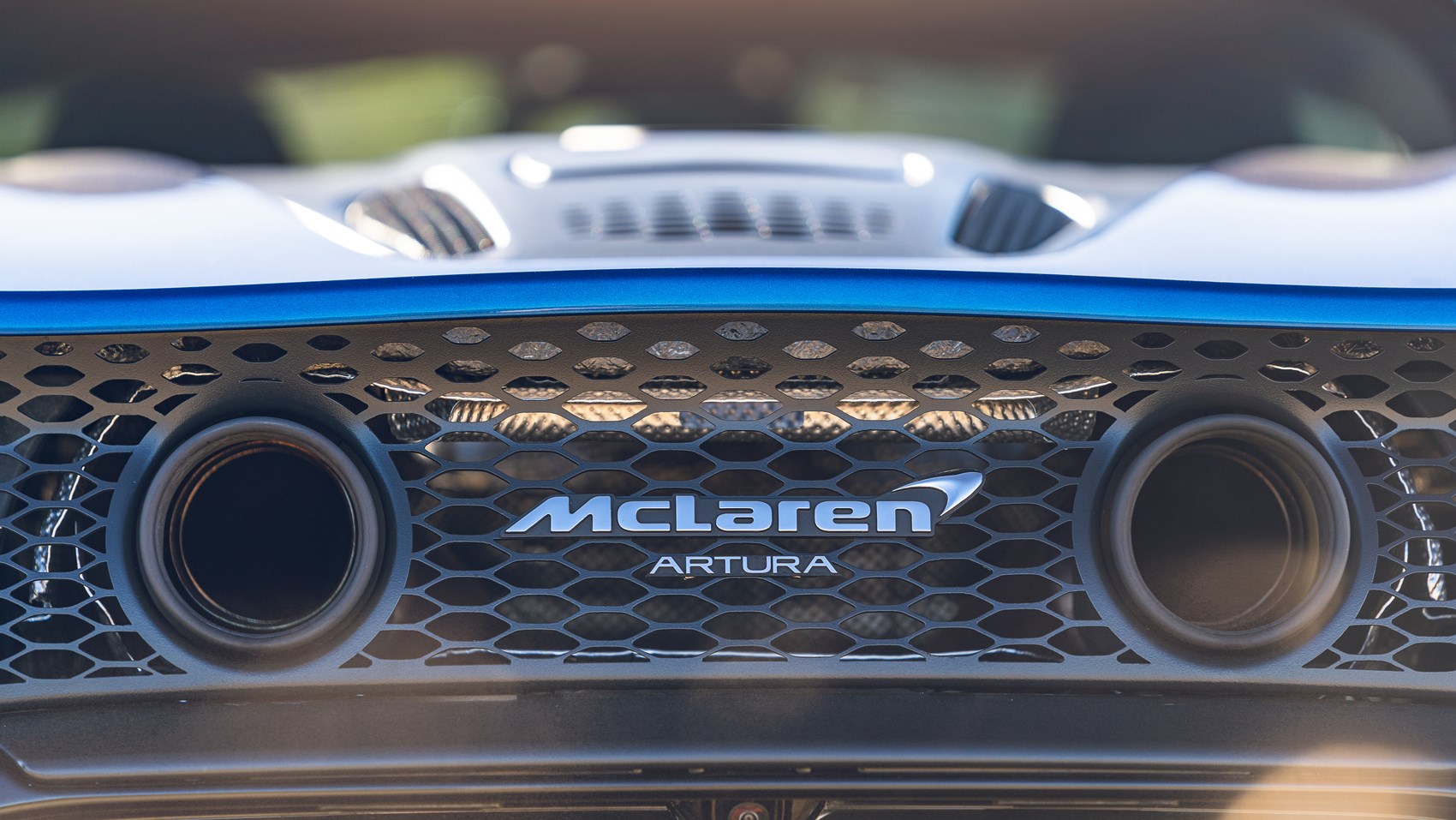
The engine develops around 577bhp on its own. With the e-motor lending a hand, combined total power is 671bhp. The motor is about the size of a dinner plate, weighs around 15kg and is positioned in the casing of the gearbox. That’s a brand-new eight-speed twin-clutch unit.
What does that engine feel like to drive? And what does it sound like?
To begin with, you don’t hear it at all. The Artura’s default on start-up is electric mode, which is good for 19 miles of WLTP range assuming optimum conditions and a fully charged battery.
(It might also take a couple of goes to start – like older McLarens the Artura demands an emergency stop’s worth of pressure on the brake pedal to allow the starter button to switch the car on).
You breeze away on the motor’s power alone, and in electric mode the Artura could travel at up to 80mph. Depress the throttle fully in e-mode and it won’t fire the engine up. Nor will it accelerate dramatically away from the lights – it’s programmed to be a gentle, smooth build up to preserve energy from the relatively small 7.4kWh battery, positioned under the fuel tank. (Where it steals a bit of fuel space; but then adds e-range, so no net loss.)
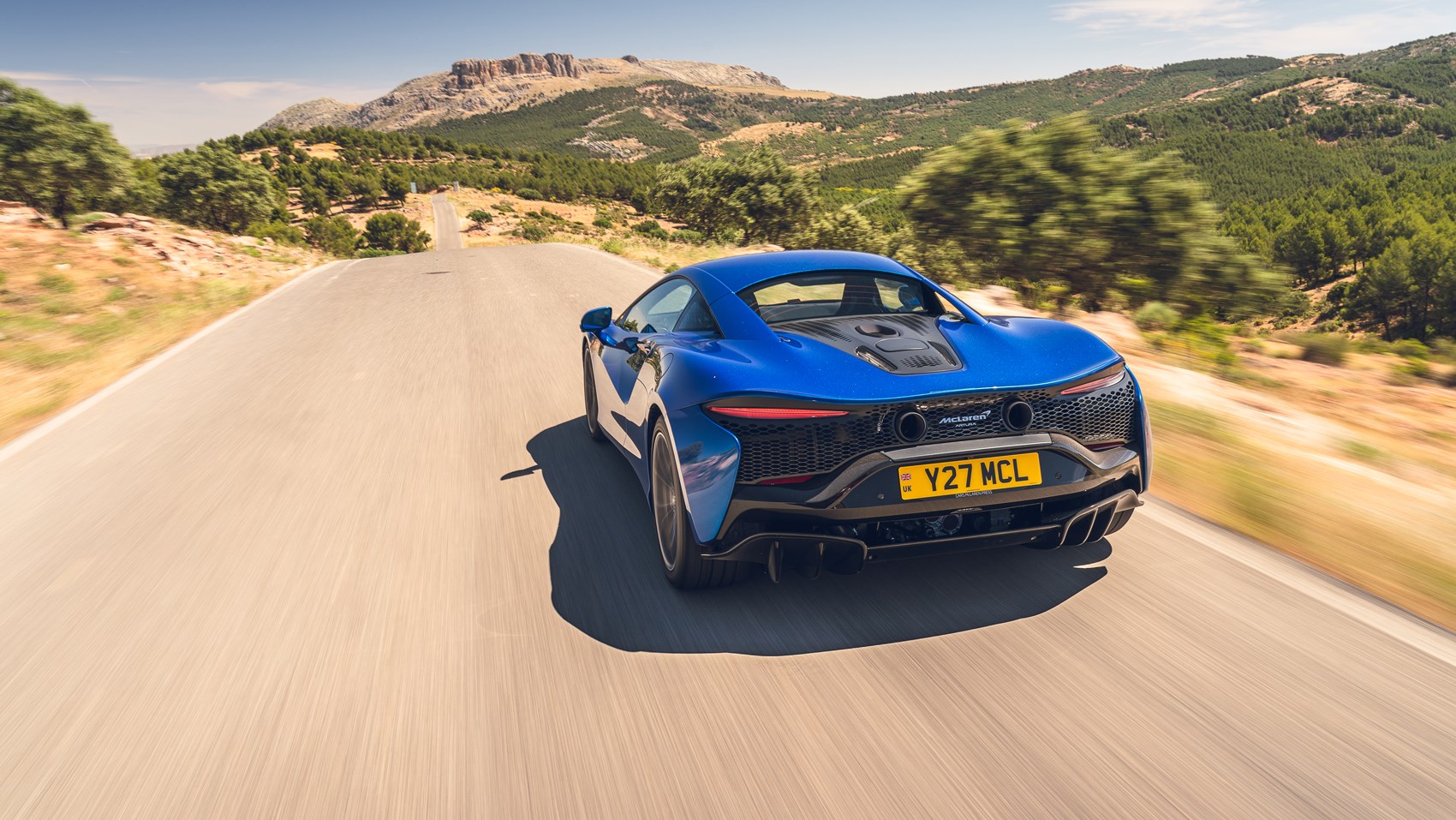
It’s not totally silent like an electric limo; you hear whine from the transmission (the motor runs through the gearbox but you can only change gears manually when the engine’s running) but it’s not too intrusive. A buzzy rattle coming from the instrument panel in this pre-production car is, though; McLaren assures it won’t be the case for production cars.
Then the engine fires up. Like the V8 before it, it’s not particularly melodious. It’s a gruff, slightly monotone note. A little like modern F1 cars, in fact. It does sound purposeful, and it’s not an unpleasant sound but it’s not an all-time-great supercar soundtrack.
It’s fast, though, right?
Good gracious, yes. The Artura doesn’t hang about, and it has recorded a 0-124mph time of 8.3 seconds and 0-186mph in 21.5.
The motor can help with ‘torque-fill,’ lending a bit of shove to make up for the natural turbo-lag. That said, unless you’re in Track mode for the powertrain, in feel it’s still a sustained build-up of power and torque rather than a sudden hit of acceleration. Maybe it’s the placebo effect of a more muffled soundtrack but the old V8 felt like it had a more savage punch when the turbos came on song.
Track mode, you say?
Rather than the old Active panel of drive modes in previous models, McLaren has moved its drive modes to the top of a new digital instrument panel which moves together with the steering wheel, as seen in the McLaren Elva.
There are rocker switches left and right, which you reach with outstretched fingertips. On the left, three modes for the dampers: Comfort, Sport and Track; on the right, the same for the powertrain, with a further Electric mode setting. A button in the centre of the Handling mode switch disables the stability control (or enables the variable drift control mode as seen on 720S), and a button on the Powertrain switch toggles between auto and manual gear control with the paddles (nice metal mouldings, which move with the wheel).
Comfort mode blends electric and engine power, prioritising the motor when the engine’s under low load and short-shifting to save fuel. Sport mode flips that balance, and has a sportier gearbox map. Track mode is all about performance, so the motor’s there primarily to boost acceleration under 100% throttle. At lower throttle modes, the engine partially charges the batter, to prime the motor to help punch out of the next corner.
It’s a good way of ensuring you’ll have enough charge in the battery for when you get to a town – or a pull on the left-hand stalk behind the wheel can toggle the battery between maximum charge (using the engine to help stoke the battery’s energy) or minimum, deploying the battery whenever possible to save fuel.
Regen is not by braking – press the brake pedal and it always feels consistent, as the brakes are purely for braking, not for energy harvesting.
Does it still feel like a McLaren in terms of handling?
Yes, very much. That brake feel is as consistent as we’ve come to expect and enjoy from older McLaren models, and still demands a firm press, like a racing car. The pedals have been shifted slightly to the right, so it no longer feels like it’s more natural to brake with your left foot than your right, but your legs are still ahead of you in a straight line from a low-set seating position, with a great view ahead over the low nose.
Although the Artura now features ADAS such as lane-departure warning, that doesn’t include lane-keep assist as its power steering is still electro-hydraulic rather than EPAS. That’s a conscious decision by McLaren to ensure the best possible feel and response, and the Artura really does have remarkable steering.
At first it almost feels EPAS-like in the way it doesn’t kick back or pull over bumps – it stays remarkably true and accurate, even on uneven surfaces. The fact it’s not writhing around in your hands means it feels a touch remote at first but after a few miles you begin to enjoy its total unflappability and make the most of how incredibly linear it is. This is very much a one-corner, one-turn kind of car. The steering rack isn’t as fast as a Ferrari or Lamborghini, for example, and that gives it a measured feel.
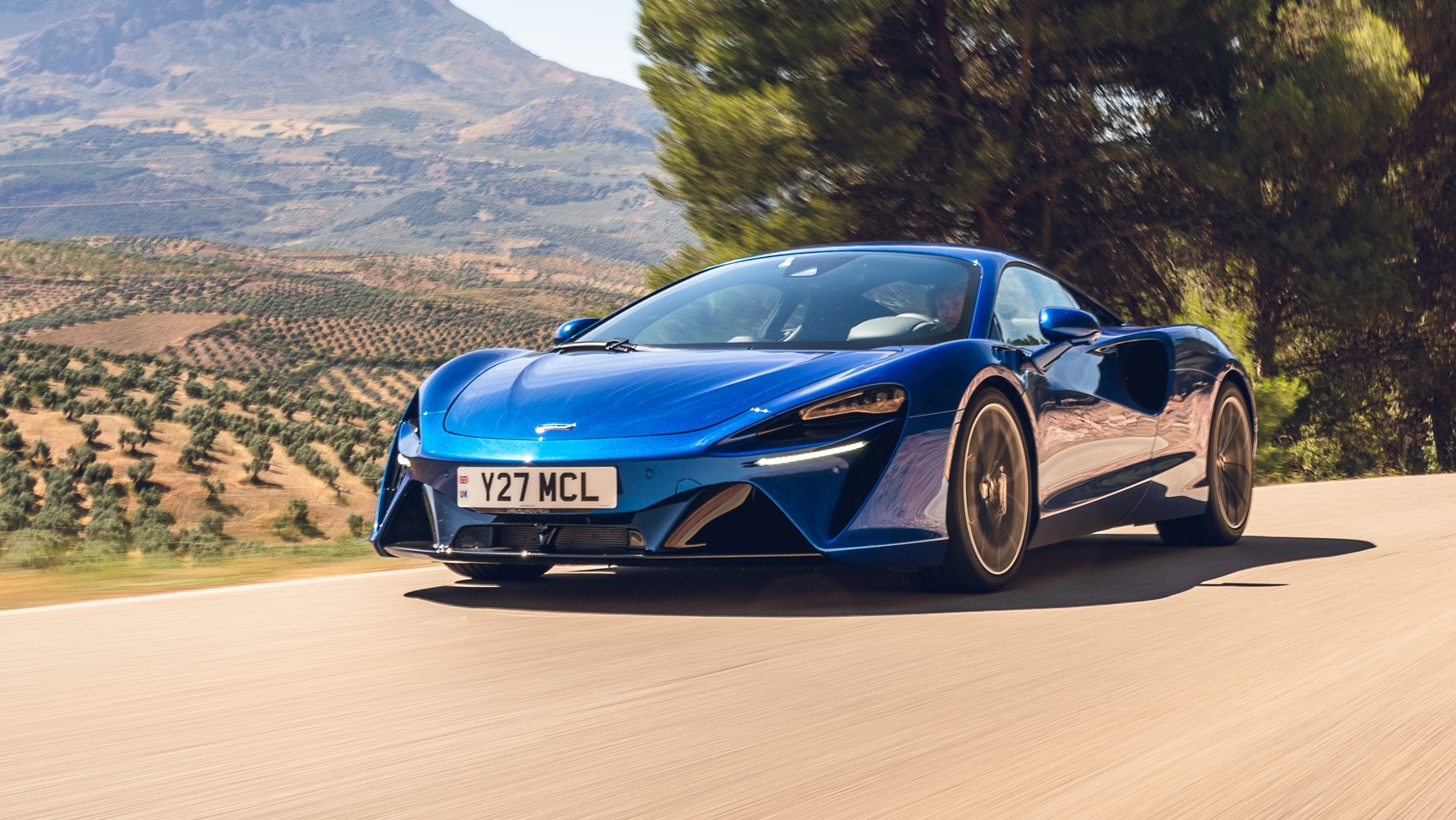
Brake feel, too is remarkably consistent, since there’s no hybrid regen on the pedal. It feels the same every time you punch the pedal, and you do need to press it hard. Like previous McLarens, there’s very little travel and it feels almost like a racing car in that it requires a fair bit of pressure – no bad thing. It’s the antidote to overservo’d performance cars. Ceramic discs are standard.
It’s only when braking very deep into tight corners that you feel the Artura is carrying a little more weight and momentum than a 570S to manage but it doesn’t feel out of its depth by any means.
The relatively narrow width (it’s a wide car by conventional standards but not exceptionally so for a supercar, and its less broad than a 720S) helps with threading the Artura down winding roads, and also in city centres too. Good turning circle, too.
You drove the Artura on track too?
At the challenging, undulating Ascari circuit, a rollercoaster of a track with a great deal of elevation-change and blind corners. McLaren’s customer research indicates that a great deal of buyers do use their cars on track regularly, so circuit capability was important to the car’s brief, as is repeatable performance. McLaren wants the Artura to be capable of multiple hard laps of a circuit without depleting its battery and performance dropping off throughout a session.
That was the case during our session, where the Artura felt as potent on the final lap as the beginning. Its handling, too, is consistent. Like the Sports Series, balance is slightly toward understeer – no bad thing, as it gives you a stable base to lean on and work with, and it’s a neutral car overall.
The stiff chassis structure means you get faithful response from the suspension and the Artura does the same thing in the same way at each corner each lap, giving you confidence. That also means it responds well to trailing the brakes into a corner to help rotate the car.
Braking stability is remarkable too. Part of the reason McLaren has adopted a multi-link rear suspension layout (previous McLaren road cars have been double-wishbone front and rear; the Artura retains double wishbones at the front) is for greater toe stiffness and that, together with the low centre of gravity, makes the Artura very stable under heavy braking, with very little wandering even in big stops from very high speeds.
Any dynamic downsides?
Back on the road, of the three damping settings Comfort gives lovely ride quality but may leave you wanting a bit more body control when driving quickly, so you switch to Sport which still allows relatively silky ride quality and allows tighter control. That said, I find it a little abrupt in the way it sits up on rebound after compressing over a bump. It’s a slightly bouncy feel, like a boat on choppy waters. It’s far from bad but from memory I’d say a Porsche 911 Turbo or a mid-engined V8 Ferrari has more well controlled vertical movements at speed on bumpy roads.
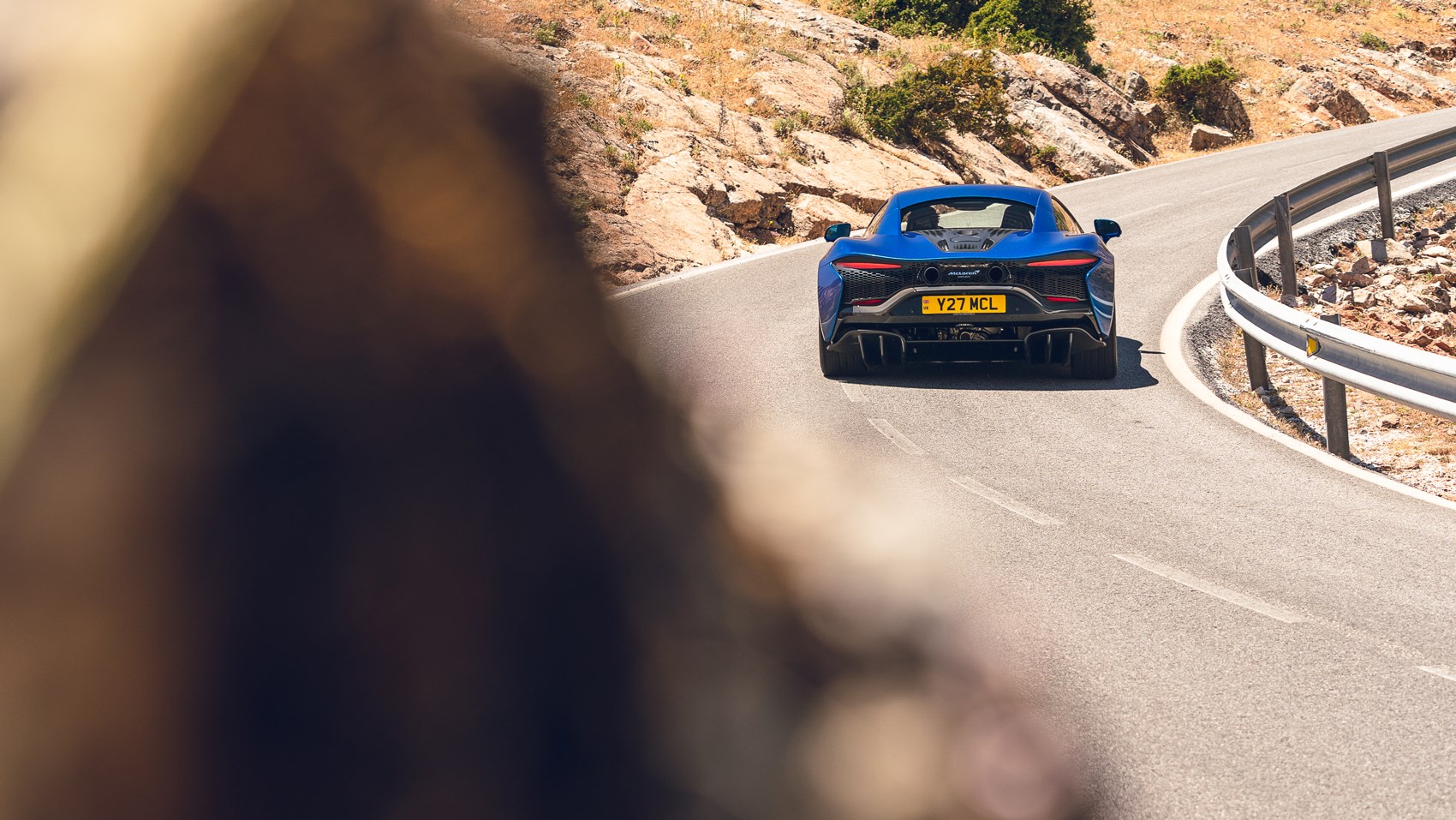
We were driving a pre-production car in this test. In terms of reliability, McLaren experienced some heat and software issues with other cars on the press launch event. The cause of the former has been identified and rectified, and the latter will be fixed by a software update which was already scheduled to take place before production of customer cars begins. None of those issues are expected to be a factor for customer-spec Arturas.
What’s the new infotainment system like?
It’s slicker than the system in McLarens of old although the touchscreen’s position is in some ways a little awkward, in that it requires you to take your gaze down from the road below the dash line and then refocus back to the road afterwards. A clickwheel on the side controls volume, and shortcuts back to the main home screen. The system works with both Apple CarPlay and Android Auto in portrait format, and during our test we navigated using Google maps and hooked up to Spotify without any issues.
McLaren Artura: verdict
The Artura is a nuanced car with an impressive bandwidth of abilities. It’s genuinely capable over long journeys – we covered more than 300 miles during our test without discomfort, and like previous McLarens it has very generous luggage space within the front boot. It does get hot in there, though – our sandwiches we put in there in the morning were a bit on the warm side by the time we came to eat them…
The new infotainment isn’t perfect but it’s good enough – slicker than the older system, and fully capable for over-the-air updates, so will get continually slicker over time.
All-round visibility is superb and the hybrid capability in many ways broadens this car’s palette – the sleepy villages we trundle through in rural Spain remain sleepy rather than being woken by a noise supercar, and manoeuvring into a crowded city square for photographs later in the day isn’t the stress-fest it might be in a cacophonous engine-always-on regular supercar.
Has the hybrid system also made the McLaren Artura less engaging on a good road? Not in terms of handling, which is consistent and rewarding, nor in terms of performance. When engine and motor are working in harmony the sheer pace is impressive, and although the Artura does weigh a little more than it would without the system, McLaren’s weight-saving work has made the net increase in mass impressively scant. And if the Artura does at times feel more aloof and grown-up dynamically than some previous McLarens, there will no doube be more extreme variants launched in the near future which will be even more engaging.
The new V6 is not, subjectively, the most charismatic of engines in terms of its sound and the character of its power delivery, and that may be a deal breaker for some – just as its torquey nature and muscular sound might hold a great deal of appeal to others. So might the cautious exterior design approach.
On the basis of this writer’s experience in this test, the Artura is an impressive car with real depth, and which gathered more and more appeal with every mile. McLaren’s second chapter is shaping up to be a fascinating read.
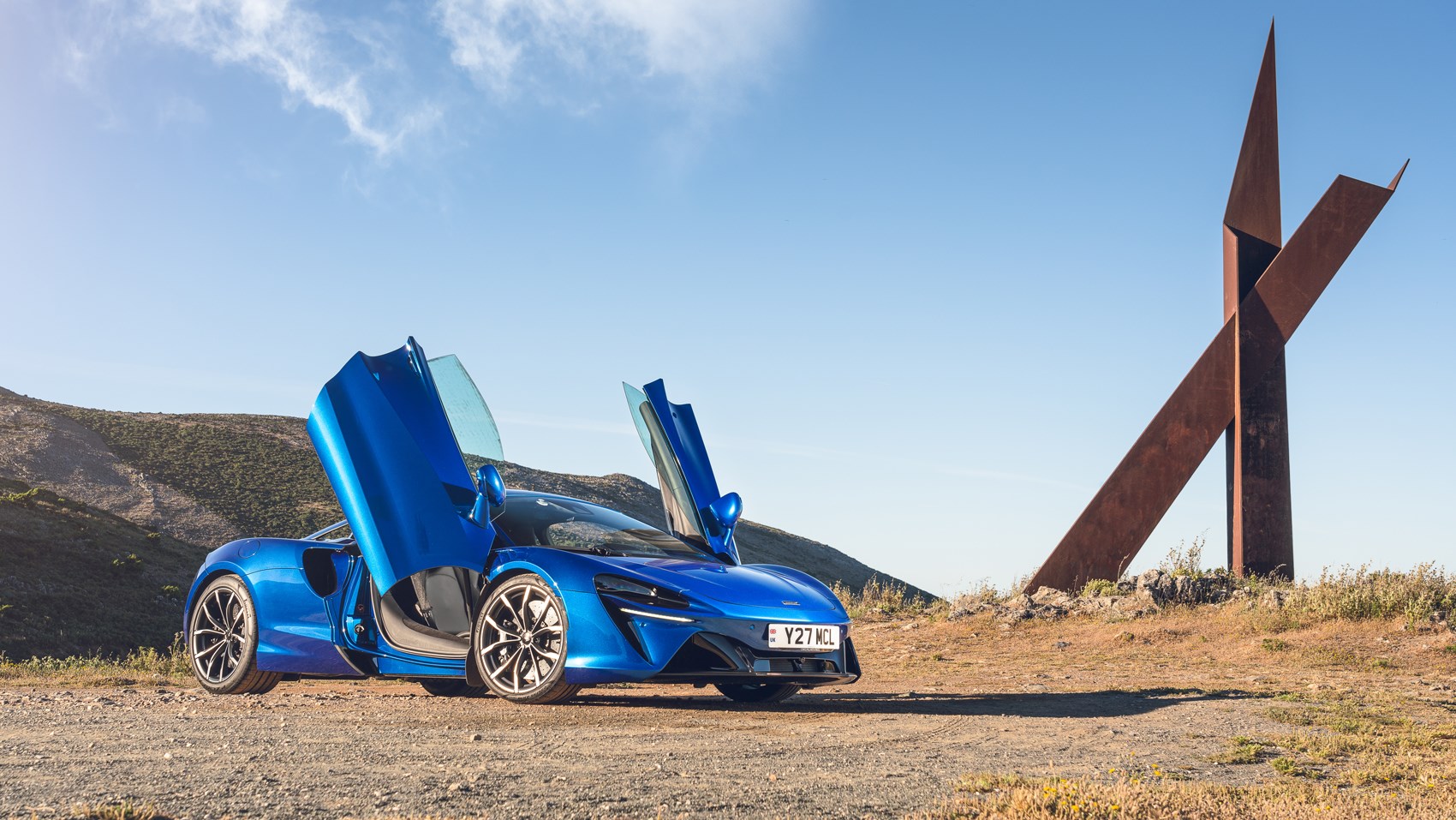
Photography: Jordan Butters